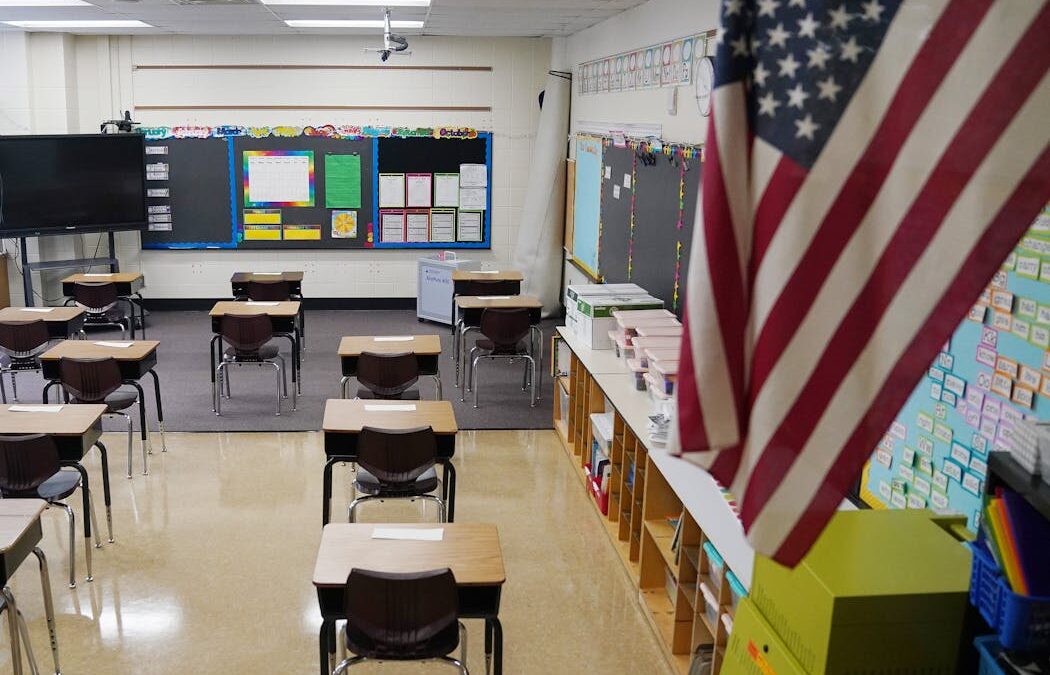The Minnesota Legislature’s education budget bills call for big increases to general funding formulas, plus dedicated money for school support staff, literacy initiatives, after-school grants and building a more diverse teacher workforce.
In budget targets announced last week, top lawmakers said they intend to spend $2.21 billion more on education in the next biennium than in the current one.
“We’ve had over 20 years of underinvestment in our schools. While we cannot change that overnight, or even in one biennium, this is an incredible start,” Rep. Cheryl Youakim, DFL-Hopkins, the house education finance chair, said Wednesday.
Differences on spending, policy
While the majority DFL’s leaders in the House and Senate education committees mostly agree on priorities, their spending bills contain significant differences on spending and policy.
The Senate bill unveiled this week would increase per-student state aid by 4 percent and 5 percent in the next two years, at a cost of $913 million. The House bill follows Gov. Tim Walz’s proposal of 4 percent and 2 percent increases.
However, the House bill would tie future formula increases to inflation while the Senate would not. School district leaders have long sought those built-in increases, saying they’d make it easier to plan.
In addition to the formula hikes, both chambers want to send huge amounts of money to schools based on how much they spend on English language learners and special-education students. School leaders say they don’t get enough state and federal revenue for those students, so they have to divert funds intended for everyone else.
The House bill would reduce by half the so-called special-education “cross-subsidy” with $730 million in new biennial funding. The Senate would spend $653 million on the same effort, cutting the cross-subsidy by 40 percent, but their bill would keep chipping away at the funding gap with another $1.08 billion in fiscal years 2026-27.
Both bills would eventually eliminate the English learner cross-subsidy. The House wants to spend $82 million on it this biennium and $272 million the next, while the Senate would spend $143 million and $253 million.
“This is a grand slam,” St. Paul Public Schools lobbyist Jim Grathwol told Senate education finance committee members Wednesday. “These are stunning investments.”
Counselors, teacher diversity
There’s also plenty of money for schools to hire – or retain if they’re being paid with expiring federal grants – more counselors, social workers, school psychologists and nurses. The House bill calls for $75 million over the biennium for these support staff and the Senate $49 million, with those amounts doubling in 2026-27 in both cases.
The House is looking to spend $94 million, and the Senate $52 million, on “Grow Your Own” grants for partnering school districts and teacher-preparation programs to get more people licensed to teach. These grants sometimes are geared toward people of color, but the House ($10 million) and Senate ($9 million) bills also have separate line items for teacher-of-color grants.
“We know that students learn better when they see themselves in the adults they work with every day,” Education Commissioner Willie Jett said.
Pre-school, literacy
Without legislative action, 4,000 state-funded voluntary preschool seats that date to the Mark Dayton administration are set to expire. The House bill would spend $85 million next biennium and $155 million after that to expand the program to 9,200 seats. The Senate bill would spend $40 million just to maintain the 4,000 seats but would also spend $271 million expanding early-learner scholarships for low-income families.
Ericca Maas of Think Small, which advocates for early childhood programming, said that even with those scholarships, only one-third to one-half of the 31,000 low-income youngsters who need quality child care would get it.
Both chambers are intent on ensuring schools are using proven practices, such as phonics, for teaching kids to read and write. The bills – $73 million in the House and $41 million in the Senate – would invest in teacher training and curricular materials and require schools to screen for reading problems in kindergarten.
Other grants
Other proposed spending areas include:
- After-school program grants (House $25 million, Senate $40 million);
- Grants for full-service community schools, which make school buildings one-stop shops for a range of services that support young families (House $27 million, Senate $15 million)
- Grants to revitalize American Indian languages ($15 million both chambers)
- Paid orientation for paraprofessionals (House $16 million, Senate $14 million but doubling the following biennium)
- Stocking schools with menstrual products (about $3.5 million both chambers).
Where they differ
There are some areas where the two chambers disagree.
The Senate wants $59 million in dedicated state aid for school libraries for the first time, while the House has nothing for that. The Senate also wants $20 million for Head Start and $8 million for grants that take aim at achievement gaps.
Meanwhile, the House wants $50 million to buy time for special-education teachers to complete due-process paperwork, plus another $10 million in transportation money for sparsely populated districts and $2 million in grants for gender-neutral bathrooms.
Policy changes
Besides all the spending, several new education policies are being considered in the House bill and in a separate Senate education policy bill. They include:
- Requiring high schools to offer a course in ethnic studies.
- Explicitly making “class sizes, student testing, and student-to-personnel ratios” subject to collective bargaining by teachers unions.
- Banning schools from using American Indian tribes as mascots.
- Letting school boards renew existing referenda without going to voters.
- Prohibiting schools from suspending or expelling students before the fourth grade unless there’s an ongoing safety concern.
- Stopping schools from punishing students by withholding recess.
Both the House and Senate education finance committees plan to meet Thursday morning to consider amendments to their bills before legislative leaders from both chambers work toward a compromise.
Clarification: This article has been updated to clarify that the Senate is considering new education policies in a separate bill


Recent Comments